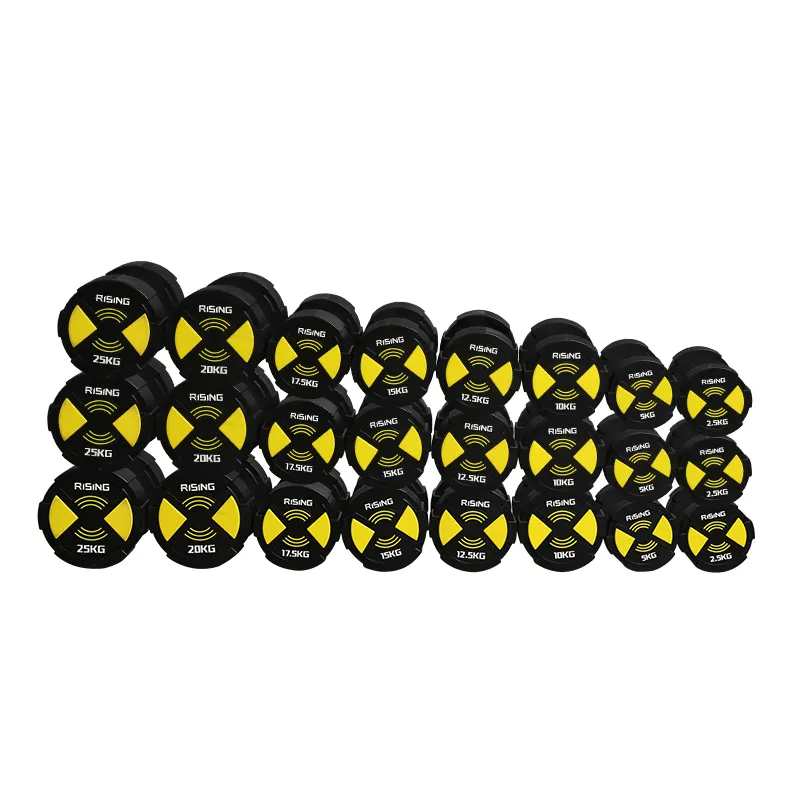Behind the Scenes: How ISO-Certified Factories Produce Premium Fitness Equipment
The fitness equipment industry has evolved dramatically, with manufacturers adopting rigorous production standards to meet global demand for durable, high-performance gear. Factory-direct operations now leverage ISO certification processes to ensure every piece of fitness equipment meets exacting quality benchmarks from raw materials to finished products. This behind-the-scenes exploration reveals how modern manufacturing techniques combine with quality control systems to produce commercial-grade fitness equipment capable of withstanding years of intense use. Understanding these production processes helps buyers make informed decisions when investing in professional fitness solutions.
The Importance of ISO Certification in Fitness Equipment Manufacturing
How ISO Standards Elevate Equipment Quality and Safety
ISO certification represents more than just paperwork—it fundamentally transforms how fitness equipment gets designed and manufactured. Factories adhering to ISO 9001 quality management systems implement documented procedures for every production stage, from material selection to final inspection. This systematic approach eliminates variability in manufacturing, ensuring each weight stack, treadmill frame, or resistance machine meets identical performance standards. For fitness equipment buyers, this means predictable quality across entire product lines and bulk orders. The certification process also mandates rigorous safety testing protocols that exceed basic industry requirements, particularly important for equipment handling heavy weights or high-speed movements.
The Audit Process That Ensures Consistent Manufacturing Excellence
Maintaining ISO certification requires annual audits that scrutinize every aspect of fitness equipment production. Independent auditors examine material traceability systems, welding procedures, paint application processes, and even how factories handle customer complaints. This ongoing oversight prevents quality drift over time—a common issue in non-certified facilities. For fitness equipment manufacturers, the audit process drives continuous improvement as they implement corrective actions from audit findings. Buyers benefit from this system through equipment that demonstrates better weld integrity, more precise alignment of moving parts, and longer-lasting surface finishes. The certification also covers supplier quality controls, meaning components like bearings, cables, and upholstery materials meet the same high standards as finished fitness equipment.
Raw Materials Selection for Heavy-Duty Fitness Equipment
The Metallurgy Behind Commercial-Grade Equipment Frames
High-quality fitness equipment begins with proper material selection, particularly for structural components. ISO-certified factories specify exact steel grades for different applications—typically ASTM A500 Grade C or equivalent for weight-bearing frames. This cold-formed structural tubing offers superior strength-to-weight ratios compared to consumer-grade alternatives. For high-stress points like pivot joints and weight stack guides, manufacturers often use induction-hardened steel rods that resist wear under friction. The material certification process ensures traceability back to steel mills, with chemical composition and mechanical property testing verifying each shipment meets specifications. This attention to metallurgy results in fitness equipment that maintains structural integrity through years of commercial use without developing the wobbles or alignment issues common in inferior products.
Premium Upholstery and Composite Materials for Longevity
Beyond metal components, fitness equipment requires durable contact surfaces that withstand constant use. Commercial-grade upholstery starts with high-density foam cores (minimum 1.8 lb/ft³ density) wrapped in marine-grade vinyl or antimicrobial leatherette. ISO-controlled production ensures consistent thickness and tear resistance across all padding components. For selectorized equipment, composite nylon guide rods and self-lubricating bushings replace cheaper plastic components that degrade over time. Even the powder coating process receives special attention, with pretreatment chemical baths and electrostatic application ensuring perfect adhesion to metal surfaces. These material choices explain why professional fitness equipment maintains its appearance and functionality years after budget options would require replacement.

Precision Manufacturing Processes for Fitness Equipment
Computer-Controlled Fabrication Techniques
Modern fitness equipment production utilizes advanced CNC machinery for precision cutting, drilling, and milling operations. Laser cutting systems profile steel components with tolerances under 0.1mm, ensuring perfect fitment during assembly. Robotic welding cells produce consistent, high-penetration welds at every joint—critical for equipment handling dynamic loads. Computer-guided bending machines form complex tubular shapes without compromising structural integrity. This automated approach allows ISO-certified factories to maintain quality standards while scaling production to meet global demand for commercial fitness equipment. The digital workflow also enables efficient customization, with CAD/CAM systems quickly adapting designs for special-order configurations without sacrificing precision.
Assembly Line Quality Checkpoints
The assembly process for professional fitness equipment incorporates multiple quality verification stages before products ship. After initial component fabrication, parts undergo dimensional verification using coordinate measuring machines. Sub-assemblies like pulley systems get cycle-tested to simulate years of use in compressed timeframes. Final assembly includes torque verification on all fasteners and functional testing of adjustment mechanisms. Paint finish inspections check for perfect coverage with no thin spots or orange peel texture. For electronic fitness equipment, burn-in testing runs control boards through extended operation cycles. This multi-stage verification process, documented through the ISO quality system, ensures only perfect units reach the shipping area. The result is fitness equipment that performs flawlessly from day one in commercial gym environments.
Testing Protocols That Guarantee Equipment Reliability
Structural Load Testing Beyond Rated Capacities
Responsible fitness equipment manufacturers subject their products to destructive testing that far exceeds labeled weight limits. Weight stack frames might undergo static loads at 300% of maximum capacity while monitoring for any deformation. Impact testing simulates accidental drops of weight plates or abusive loading conditions. Fatigue testing machines cycle moving components through hundreds of thousands of repetitions to identify potential wear points. These extreme tests inform design improvements that trickle down to all production units. For buyers, this translates to fitness equipment with generous safety margins that won't fail under normal—or even extreme—usage conditions. The testing data also helps manufacturers optimize designs without over-engineering, keeping equipment affordable without compromising durability.
User Experience and Ergonomics Validation
Beyond structural testing, premium fitness equipment undergoes human factors analysis to perfect the workout experience. Biomechanics specialists evaluate equipment adjustments to ensure proper alignment for various body types. Grip diameters, seat contours, and range-of-motion limits get refined through user trials. Even subtle factors like handlebar texture and pedal spacing receive attention during development. This user-centered design process, documented within ISO quality systems, explains why professional fitness equipment feels "right" from the first use compared to cheaper alternatives. The ergonomic validation also reduces injury risks by ensuring proper body positioning during exercises—a critical factor for commercial facilities concerned about liability.
Customization Capabilities in Modern Fitness Equipment Production
Design Flexibility Without Compromising Quality
ISO-certified factories have developed systems to accommodate custom fitness equipment requests while maintaining production standards. Advanced CAD/CAM workflows allow efficient modification of standard designs for special applications. Color customization goes beyond simple powder coat options to include two-tone schemes, textured finishes, and even embedded logos. Dimensional adjustments can accommodate space-constrained installations without altering equipment functionality. The quality management system ensures these customizations don't introduce compromises—material specifications and construction standards remain identical to standard product lines. This flexibility allows commercial buyers to specify fitness equipment that matches facility aesthetics while maintaining commercial-grade durability.
Branding Integration for Facility Identity
Professional fitness facilities increasingly use equipment as branding elements, and manufacturers have responded with sophisticated marking techniques. Laser etching creates permanent, wear-resistant logos on metal components. Custom embroidery options elevate upholstery branding beyond simple vinyl stickers. Some manufacturers even offer full-wrap graphic treatments for cardio equipment consoles. The ISO certification ensures these branding elements don't interfere with equipment functionality or durability. For franchise operations, this capability ensures consistent brand presentation across locations while maintaining equipment performance standards. The branding integration occurs during normal production rather than as aftermarket modifications, preserving warranty coverage and finish durability.
Sustainable Manufacturing Practices in Fitness Equipment Production
Material Efficiency and Waste Reduction Systems
ISO-certified fitness equipment factories implement robust sustainability programs that benefit both the environment and product quality. Computer nesting software optimizes sheet metal cutting patterns to minimize scrap. Metal shavings from machining processes get collected and recycled rather than landfilled. Powder coating systems achieve over 95% transfer efficiency through electrostatic application, reducing paint waste. Even packaging materials get optimized to protect products during shipping without excessive use of plastics. These sustainable practices often result in cost savings that manufacturers can pass along to buyers of commercial fitness equipment. The systematic approach required by ISO standards makes these improvements measurable and verifiable rather than just marketing claims.
Energy-Efficient Production Technologies
Modern fitness equipment manufacturing facilities invest in technologies that reduce energy consumption while maintaining precision. Regenerative braking systems on CNC machines recover power during deceleration. High-efficiency compressors and dust collection systems minimize electricity usage. LED lighting with motion sensors cuts power consumption in warehouse areas. Some factories even generate solar power to offset production energy needs. These investments demonstrate how quality-focused manufacturers consider the entire lifecycle of fitness equipment, from sustainable production to energy-efficient operation in end-user facilities. Buyers increasingly value these environmental considerations when specifying commercial fitness equipment for eco-conscious projects.
The Factory Direct Advantage for Fitness Equipment Buyers
Eliminating Middleman Markups Without Sacrificing Support
Purchasing fitness equipment directly from ISO-certified factories provides cost advantages while maintaining service quality. The direct model removes distributor markups that can add 30-50% to equipment costs. However, reputable manufacturers maintain regional service networks to provide local support when needed. Factory-trained technicians offer more specialized knowledge than third-party service providers when maintenance or repairs become necessary. The direct relationship also simplifies warranty claims and allows for better communication about product updates or recalls. For large fitness equipment orders, factories can often assign dedicated account managers who understand the specific needs of commercial installations.
Transparent Pricing and Specification Clarity
Factory direct purchasing eliminates the specification games sometimes played by equipment resellers. Buyers receive detailed technical data sheets listing exact materials, dimensions, and performance specifications rather than marketing-flavored brochures. Pricing structures are typically more straightforward without hidden fees for "basic" versus "premium" versions of the same fitness equipment. The ISO certification ensures these specifications are accurate and verifiable, giving buyers confidence in their purchasing decisions. For procurement professionals outfitting multiple facilities, this transparency simplifies budgeting and standardization across locations.
FAQ
How Does ISO Certification Benefit Fitness Equipment Buyers?
ISO certification ensures consistent quality and safety standards through rigorous manufacturing processes. Buyers receive reliable, durable fitness equipment backed by thorough testing and documentation.
What's the Typical Lifespan of Commercial-Grade Fitness Equipment?
Properly maintained commercial equipment typically lasts 7-10 years in gym settings. Structural components often outlast wear items like upholstery and cables that may need replacement.
Can Custom-Designed Equipment Maintain ISO Certification?
Yes, ISO-certified manufacturers apply the same quality standards to custom fitness equipment. Custom designs undergo identical material verification and testing protocols as standard products.
How Has Technology Changed Fitness Equipment Manufacturing?
Advanced CNC machining and automated systems now produce more precise, consistent fitness equipment. Digital design tools enable better ergonomics while maintaining quality standards.
Table of Contents
- Behind the Scenes: How ISO-Certified Factories Produce Premium Fitness Equipment
- The Importance of ISO Certification in Fitness Equipment Manufacturing
- Raw Materials Selection for Heavy-Duty Fitness Equipment
- Precision Manufacturing Processes for Fitness Equipment
- Testing Protocols That Guarantee Equipment Reliability
- Customization Capabilities in Modern Fitness Equipment Production
- Sustainable Manufacturing Practices in Fitness Equipment Production
- The Factory Direct Advantage for Fitness Equipment Buyers
- FAQ


